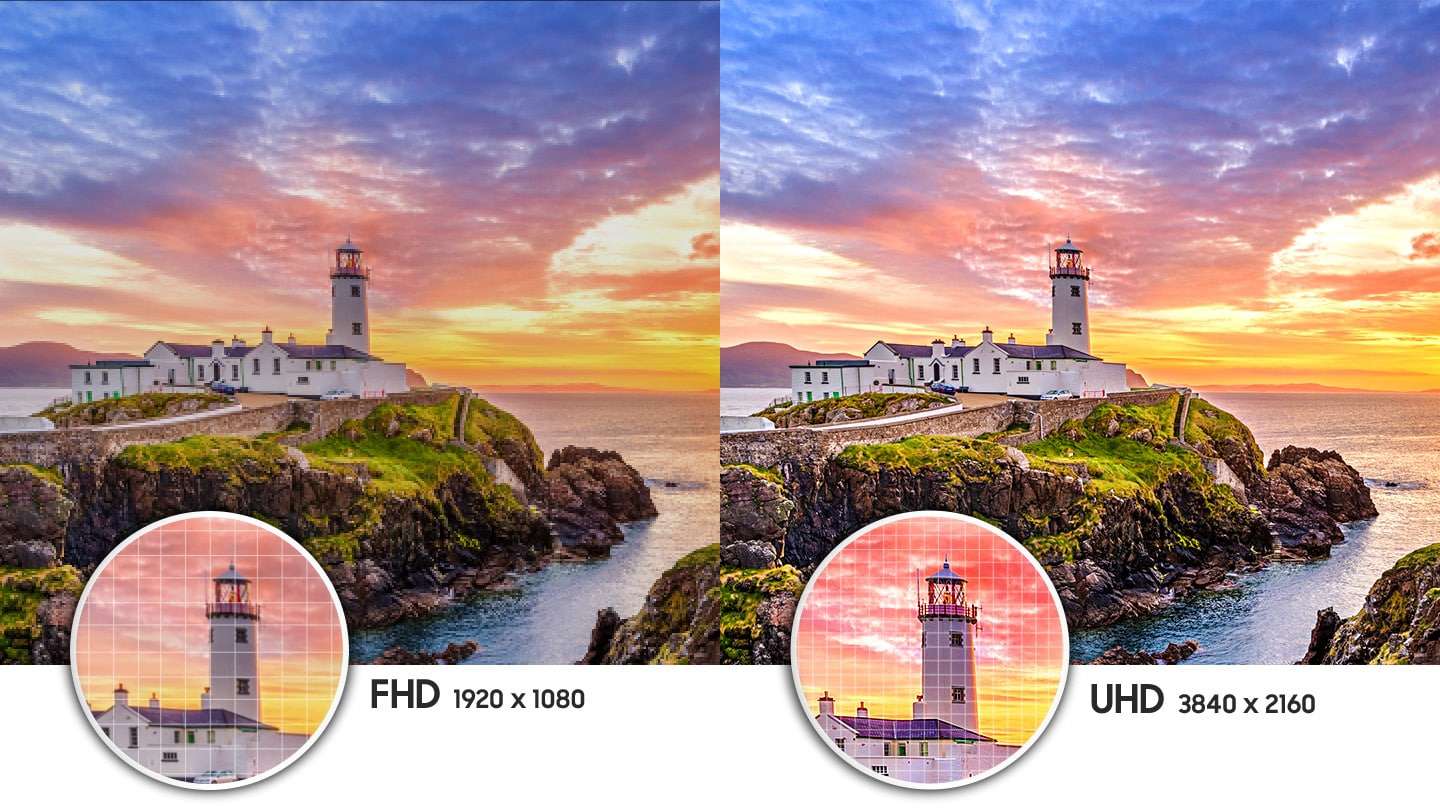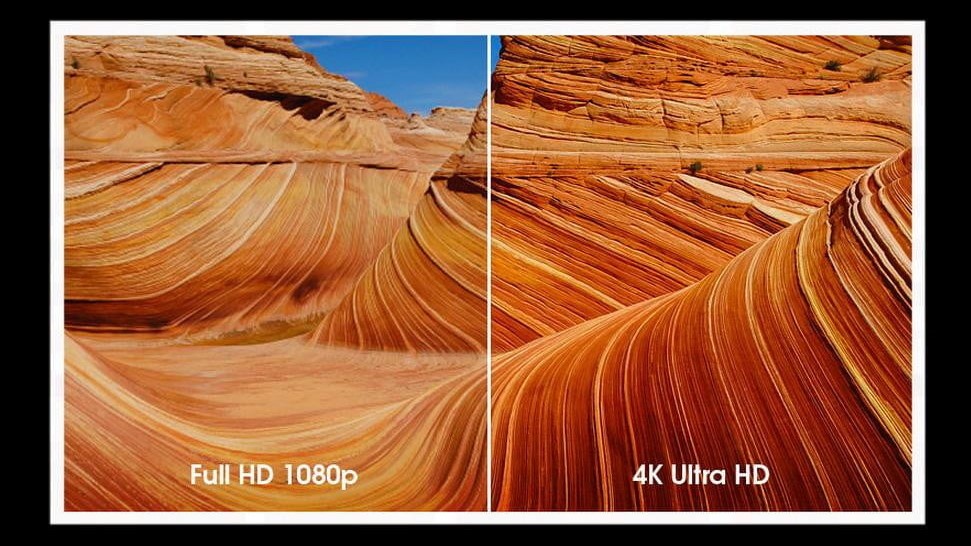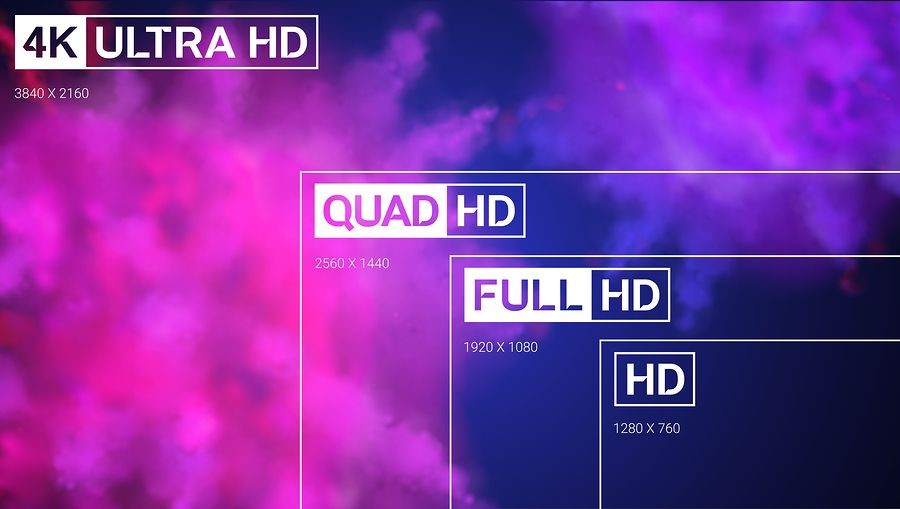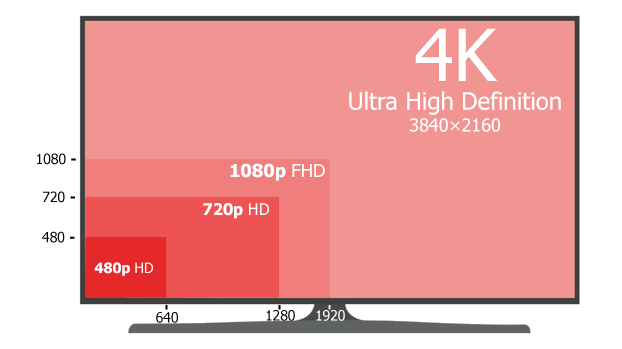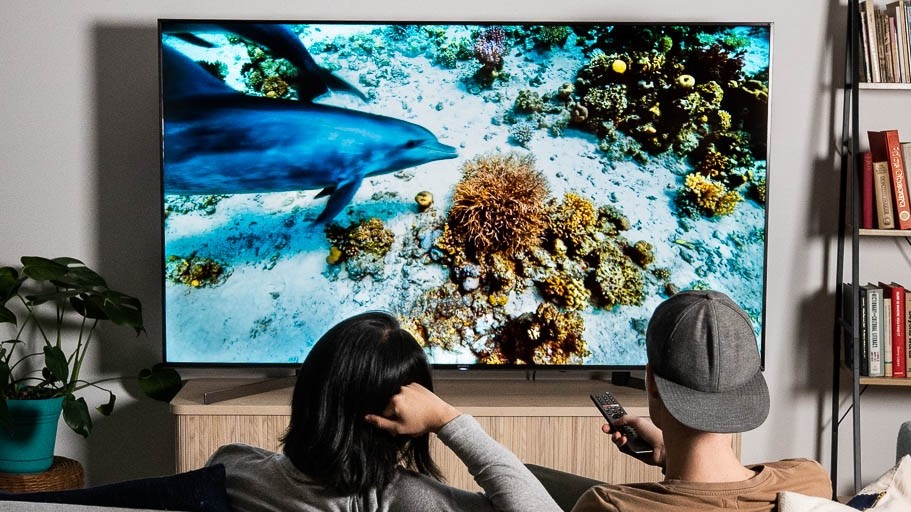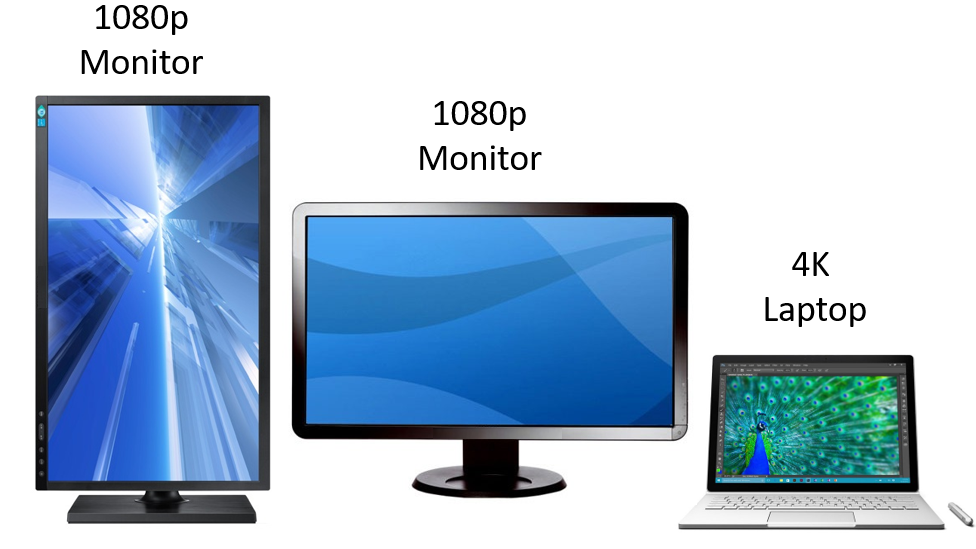Why 4K Video Is Better Than 1080P
That’s gaining attention now
The difference between 1080p and 4K is undeniable in that a 4K screen is capable of displaying four times the number of pixels as a 1080p screen. But is the human eye capable of seeing that many pixels? It actually depends on the size of the screen and where you are sitting. From a distance, it is virtually impossible for someone to tell the difference in quality between a 1080p and 4K screen. However, if you have a big enough screen, in a small enough room the difference is immediately apparent. Even if you have a large room, if you sit close enough to the screen you can see the difference.
Full HD vs Ultra HD/4K
When it comes to display screens, the more pixels the better. Why? Because all else being equal, an image with more pixels can be can be displayed at larger sizes without suffering picture degradation.
All of them have 16:9 aspect ratios and qualify as high resolution displays, but to varying degrees:
- Full HD (FHD): 1080p image resolution (1,920 x 1,080 – approx. 2 million total pixels)
- Ultra HD (UHD)/4K: 2160p image resolution (3,840 x 2,160 – approx. 8 million total pixels)
Note that Ultra HD/4K offers four times the resolution as Full HD.
Right Display Resolution
So, what should you choose? Full HD or Ultra HD/4K? The answer depends on how you plan to use your display
Full HD (1080p): Full HD displays dominate the market and have for years been the accepted standard for most home and office uses. They’re ideally suited for basic gaming needs, video streaming from services like Netflix and Hulu, and watching DVDs and online videos.
Ultra HD/4K (2160p): Ultra HD/4K displays provide stunning visual quality for advanced computer gaming, photo editing, watching films and more. However, many computer graphics cards do not yet fully support Ultra HD, so make sure the monitor technology you buy is supported by your system.
Resolving Detail
Ultra High Definition televisions using 4K technology are able to reproduce the most intricate of details in a noticeably higher contrast fashion, thanks to the existence of quadruple the number of pixels in comparison to 1080P. This is considered the greatest advantage of the 4K video standard.
Examples of where this is noticeable is in the rendering of hair or feathers, as well as other images that contain very fine detail which may have resulted in issues such as moire or slight blurring in formats besides ultra high definition. Certainly when viewed up close, these difficult to resolve patterns appear less than stellar on anything besides a 4K screen.
Closer Viewing
Thanks to the large increase in resolution that 4K has compared with 1080P, it allows the viewer to be positioned much closer to a large screen while enjoying a clearer picture. In fact, the optimal recommended viewing distance for a 4K television can be twice as close as a regular TV. This is because 4K is experienced at its best when sitting closer; sitting further back means you often won’t experience its maximum benefits (although still undoubtedly able to enjoy its supreme clarity, regardless of the distance).
In short, you can sit twice as close to a 4K screen compared with a standard high definition screen without being able to see the pixelation that occurs with the lower definition variety.
Scaling Down
Often times, a recording will need to be scaled down to a lower resolution. In the case of 4K, one may wish to downscale to a 2K high definition output. Tests have shown that when comparing the final video quality of a 4K video which has been downscaled to 2K, the picture is noticeably more detailed than could have resulted from originally creating the recording in 2K.
or people who want and expect the absolute highest possible quality motion picture experience, 4K is ticking all the boxes. From both a production point of view, and a viewing point of view, this ultra high definition technology is going to change the way we watch videos.
Television brands such as Sony are now selling 4K televisions at prices that the enthusiast can afford, and more and more video content is bring produced in 4K.
So these 5 reasons explain Why 4K Video Is Better Than 1080P
We’d love To Meet You In Person Or Via The Web!
Main Office: Suite M-01, 512, 3rd Street, Abu Dhabi, UAE
Phone: + 971 2 6767019
WhatsApp: + 971 55 3979668
Email: web@OfficePlusUAE.com

